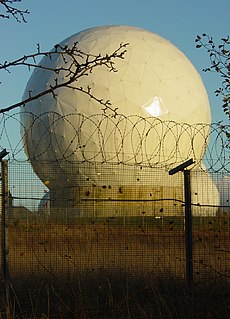
ECHELON, originally a secret government code name, is a surveillance program operated by the United States with the aid of four other signatory states to the UKUSA Security Agreement: Australia, Canada, New Zealand, and the United Kingdom, also known as the Five Eyes.

Signals intelligence (SIGINT) is intelligence-gathering by interception of signals, whether communications between people or from electronic signals not directly used in communication. Signals intelligence is a subset of intelligence collection management. As classified and sensitive information is usually encrypted, signals intelligence in turn involves the use of cryptanalysis to decipher the messages. Traffic analysis—the study of who is signaling whom and in what quantity—is also used to integrate information again.

In military telecommunications, the terms electronic support (ES) or electronic support measures (ESM) describe the division of electronic warfare involving actions taken under direct control of an operational commander to detect, intercept, identify, locate, record, and/or analyze sources of radiated electromagnetic energy for the purposes of immediate threat recognition or longer-term operational planning. Thus, electronic support provides a source of information required for decisions involving electronic protection (EP), electronic attack (EA), avoidance, targeting, and other tactical employment of forces. Electronic support data can be used to produce signals intelligence (SIGINT), communications intelligence (COMINT) and electronics intelligence (ELINT).
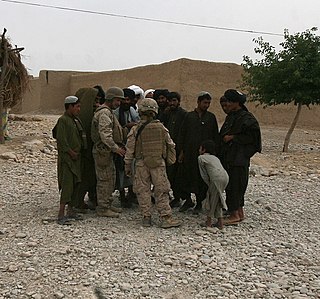
Military intelligence is a military discipline that uses information collection and analysis approaches to provide guidance and direction to assist commanders in their decisions. This aim is achieved by providing an assessment of data from a range of sources, directed towards the commanders' mission requirements or responding to questions as part of operational or campaign planning. To provide an analysis, the commander's information requirements are first identified, which are then incorporated into intelligence collection, analysis, and dissemination.
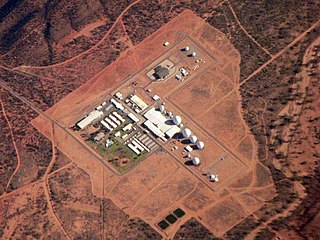
Pine Gap is the commonly used name for a US satellite surveillance base and Australian Earth station approximately 18 kilometres (11 mi) south-west of the town of Alice Springs, Northern Territory in the centre of Australia which is jointly operated by Australia and the United States. Since 1988, it has been officially called the Joint Defence Facility Pine Gap (JDFPG); previously, it was known as Joint Defence Space Research Facility.

ISTAR stands for intelligence, surveillance, target acquisition, and reconnaissance. In its macroscopic sense, ISTAR is a practice that links several battlefield functions together to assist a combat force in employing its sensors and managing the information they gather.
Signals intelligence by alliances nations and industries, many organizations, national or not, are responsible for communications security as well as SIGINT; the organization makes codes and ciphers that it hopes opponents cannot break. There is a synergy between the two components; there is a saying among cryptologists that no one is qualified to create a cipher unless they have successfully cryptanalyzed a cipher of equivalent complexity.
Radiofrequency MASINT is one of the six major disciplines generally accepted to make up the field of Measurement and Signature Intelligence (MASINT), with due regard that the MASINT subdisciplines may overlap, and MASINT, in turn, is complementary to more traditional intelligence collection and analysis disciplines such as SIGINT and IMINT. MASINT encompasses intelligence gathering activities that bring together disparate elements that do not fit within the definitions of Signals Intelligence (SIGINT), Imagery Intelligence (IMINT), or Human Intelligence (HUMINT).
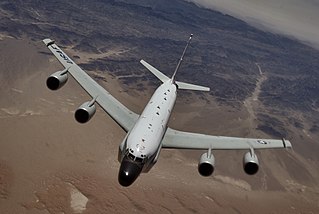
Signals intelligence operational platforms are employed by nations to collect signals intelligence, which is intelligence-gathering by interception of signals, whether between people or between machines, or mixtures of the two. As sensitive information is often encrypted, signals intelligence often involves the use of cryptanalysis. However, traffic analysis—the study of who is signalling whom and in what quantity—can often produce valuable information, even when the messages themselves cannot be decrypted.
Interdiction is a military term for the act of delaying, disrupting, or destroying enemy forces or supplies en route to the battle area. A distinction is often made between strategical and tactical interdiction. The former refers to operations whose effects are broad and long-term; tactical operations are designed to affect events rapidly and in a localized area.

The 140th Military Intelligence Battalion of the United States Army Reserve was constituted on 16 July 1986, assigned to the 63rd Army Reserve Command, and activated with headquarters at the General George Smith Patton Jr. United States Army Reserve Center, located at 5340 Bandini Boulevard in Bell, California. The battalion inactivated in 1995.

The 6th Air Intelligence Squadron is an inactive unit of the United States Air Force. Its last assignment was with Seventh Air Force, stationed at Osan Air Base, Korea. It was inactivated in 1993. The unit was originally established at Army Air Base, Colorado Springs, Colorado as the 6th Photographic Group on 5 February 1943, under the command of Lt Waymond Davis. Later that year, the unit was redesignated the 6th Reconnaissance Group and deployed to the southwest Pacific as a component of the Fifth Air Force.
After the end of World War II, all the Western allies began a rapid drawdown of military forces, including those of signals intelligence. At the time, the US still had a COMINT organization split between the Army and Navy. A 1946 plan listed Russia, China, and a [redacted] country as high-priority targets.
A SOT-A is a signals intelligence–electronic warfare (SIGINT-EW) element of the United States Army Special Forces. They are low-level SIGINT collection teams that intercept and report operational and technical information derived from tactical threat communications through prescribed communications paths. The mission of a SOT-A is to conduct SIGINT/EW in support of information operations to support existing and emerging SOF missions worldwide.
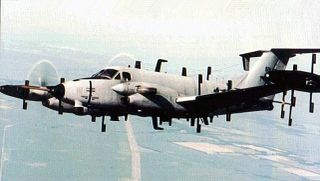
The Beechcraft RC-12 Guardrail is an airborne signals intelligence (SIGINT) collection platform based on the Beechcraft King Air and Super King Air. While the US military and specifically the United States Army have numerous personnel transport variants of the King Air platforms referred to with the general C-12 designation, the RC-12 specification refers to a heavily modified platform that collects SIGINT through various sensors and onboard processors.

Initially established as the Air Force (USAF) Security Group in June, 1948, the USAF Security Service (USAFSS) was activated as a major command on Oct 20, 1948

The 24th Intelligence Squadron is an active United States Air Force unit stationed at Ramstein Air Base, Germany. The squadron was first activated as the 24th Observation Squadron during World War II. it conducted aerial reconnaissance training, until converting to the photographic mission as the 33d Photographic Reconnaissance Squadron. it deployed to the European Theater of Operations, where it conducted combat reconnaissance missions, earning a Distinguished Unit Citation and being cited in the Belgian Army Order of the Day on two occasions. It remained in Europe following V-E Day, becoming non operational in August 1945. Its ground echelon returned to the United States in the fall of 1945 and it was inactivated at the port of embarkation.

Counter-IED efforts are done primarily by military and law enforcement with the assistance of the diplomatic and financial communities. It involves a comprehensive approach of countering the threat networks that employ improvised explosive devices (IEDs), defeating the devices themselves, and training others. Counter-IED, or C-IED, is usually part of a broader counter-terrorism, counter-insurgency, or law enforcement effort. Because IEDs are a subset of a number of forms of asymmetric warfare used by insurgents and terrorists, C-IED activities are principally against adversaries and not only against IEDs. C-IED treats the IED as a systemic problem and aims to defeat the IED threat networks themselves.
The Luftnachrichten Abteilung 350, abbreviated as OKL/Ln Abt 350 and formerly called the, was the Signal Intelligence Agency of the German Air Force, the Luftwaffe, before and during World War II. Before November 1944, the unit was the Chiffrierstelle, Oberbefehlshaber der Luftwaffe, which was often abbreviated to Chi-Stelle/ObdL or more commonly Chi-Stelle.











